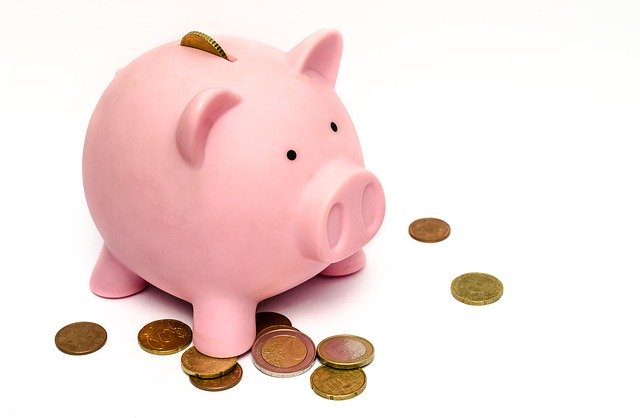Money is a tool we use each day. Parents should intentionally teach their children about money, so as they grow, they will understand it is a tool for them to use wisely, not foolishly
My daughter is only four years old yet we have already started teaching her about money. She really enjoys learning about money because she sees her parents use it almost everyday and she is intrigued by the concept. Even at four years old, children can understand more than we often give them credit for; their brains are simply amazing. Teaching a young child about money isn’t an abstract concept. Actually, it is quite appropriate because money is essential to how we live life. They see us use it. Then, they begin to create assumptions from viewing our own relationship with money. Children are always watching and always learning, even if you think they aren’t.
Ultimately, I want our children to know what money is, where it comes from, and how to use it wisely. I want them to become fiscally responsible adults and by laying a positive foundation it will only help them in the future.

Teaching Young Children About Money
First, ask your children what they already know about money. You might be surprised by their response! This will help you understand what they actually know and if they have any misconceptions about money that should be addressed. Once you collect this information, then you will know exactly what you need to teach. You could also choose to start with simple, basic concepts and then move forward to meet the individual needs of your children. Below you will find examples on how to do just that.
1. Teach About Coins & Paper Money
Show the difference between coins and paper money

Teach the numerical value of each coin or bill
When I started doing this with my 4-year-old, I printed out paper coins and pasted cute money poems on the back of each coin. I also added the name of each US President on the back as a reminder to discuss the person on each coin.

You can download the poems for FREE at this link HERE
We also enjoy listening to this catchy little tune.
Here are more video suggestions: Jack Hartmann Money Song, Cocomelon Piggy Bank Song, Coin Value Song.
2. Play Pretend with Money
Our girls love to play pretend store. We have a little cash register with play money and we take turns being the cashier and the shopper. This helps them recognize that purchasing items requires money and that each item has a certain value. For little kids, they will often say something is worth $100 but give you a quarter; which is quite hilarious. That is perfectly fine! Let them be in charge of their play and you just follow their direction. Let them come up with all of the outrageous rules; you will surely get a good laugh!
3. Earn Money By Working
Our daughter had her first job at three years old! Every time we would walk into a store, she would ask for a new toy. I am sure every parent has experienced this once or twice. At this point, she was old enough to understand that she could purchase new things from the store, but I wanted her to understand what that meant. I then talked with her about how mommy and daddy get our money. I mentioned that, if we want new things, we have to work to earn money. I wanted her to associate working with money earned. I do not want her to think that money falls from the sky. I also do not want her to assume that money will always be given to her by her parents. So, I came up with age-appropriate jobs for her to complete, to save money, for her to purchase the toy she wanted. Her little sister helped with the job too. We even involved our parents. They gave her small jobs to complete at their house. I told them ahead of time about her goals, but she had to ask them if they had jobs for her to do.
4. Take Them to the Store to Shop
It is very easy to go by yourself to the grocery store. However, I encourage you to take your children with you. Point out the cost of the items you are purchasing. Have them help you pay the cashier. If they have worked to earn their money, or they want to spend their birthday money, then give them a wallet to put their own money in and allow them to take charge of their personal shopping experience.
Just recently, I took our daughter to the dollar store where she picked out an item on her own, we discussed how much it would cost, we discussed the addition of sales tax, and then we checked out. She talked with the cashier, she paid for her single item and appropriately responded when asked if she needed a receipt. She learned so many different concepts, in just 20 minutes, from that one experience!

5. Take Them to Your Bank
What better place to learn about money and money management than a bank! Most banks have special children’s programs to help teach children about money. Call ahead to see if you can schedule an appointment to meet with a banker or branch manager to have them talk with your children about their bank. Prepare questions ahead of time to ask and have them elaborate on the bank’s programs. I took our daughter to one of our local banks, and they did a great job explaining how the bank works, the difference between checking and savings accounts, and the importance of saving money. We could even set up a savings account right then to begin saving for her future.

6. Read Books About Money
It is vital that we read to our children every day! Why not introduce them to money during storytime? There are so many great books to choose from. Here are just a few of my favorites below for you.





7. Purchase a Personal Piggy Bank
I love having a piggy bank for each of my girls. They take ownership of their little bank and love putting in new coins. My husband will often pass his loose change to them at the end of the day, and they get so excited about that! We talk with our girls about the importance of saving money; we can’t always spend it! No matter how much we want to. When the bank starts to fill up, we take the money out to count, to add it up, and then roll it up to take to the bank later on. Not only are you teaching valuable concepts for life, but you are also teaching math skills at the same time! Throw out the addition or subtraction flashcards, use money instead!


I hope the suggestions in this article are helpful to you and your family. I hope to encourage parents to use real-world, hands-on experiences to teach their children because that is how children learn best! They learn best by seeing and doing and participating in life together with their family. You are the most influential teacher in your child’s life! Always remember that.
*Stay tuned for an upcoming post with even more ideas to teach your older children about money!

You may also like…..
Using A Calendar To Teach Important Skills

*Disclosure: Links provided in this article are of products I have personally used in my home or early childhood classroom. I believe they are beneficial items that will assist you in educating your children. These links are special Amazon affiliate links. If/when someone purchases an item using the links provided it will send a small commission to help us further produce quality content for our readers.














